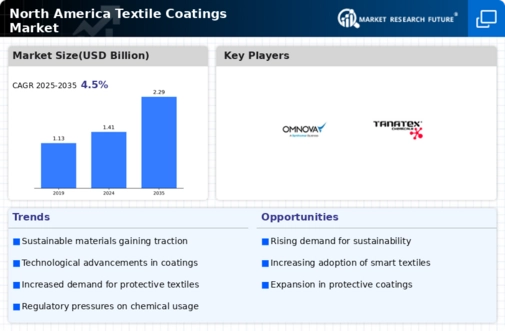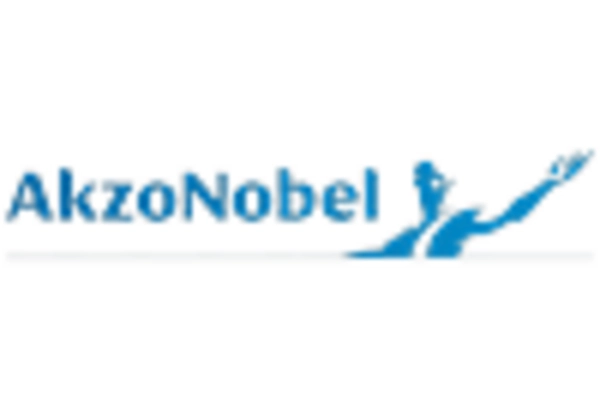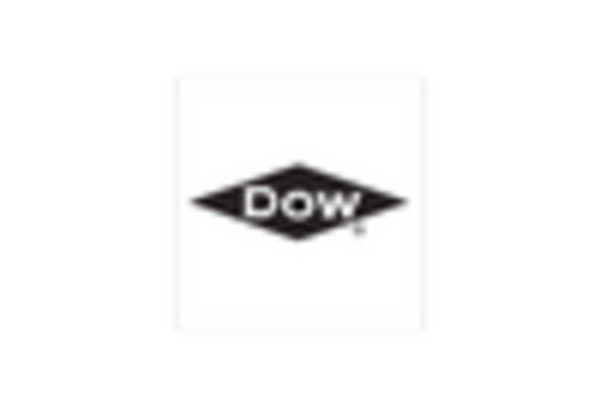Market Analysis
In-depth Analysis of North America Textile Coatings Market Industry Landscape
The North America Textile Coatings Market is changing due to technical advances, sustainability concerns, and customer preferences. Textile coatings improve fabric functionality and appearance for garment, automotive, healthcare, and protective clothing sectors. Continuous coating technology innovation drives market dynamics. Water-based coatings, nanotechnology, and phase-change materials are helping producers make fabrics with better durability, waterproofing, and thermal regulation.
North American textile coatings markets are increasingly influenced by sustainability. The textile sector is investigating eco-friendly coatings to reduce environmental effect as it prioritizes sustainability. As consumers and producers value sustainability, water-based coatings and bio-based compositions are growing. Companies that use eco-friendly textile coating methods satisfy regulatory requirements and meet market demand for sustainable products.
The North America Textile Coatings Market is extremely competitive, thus manufacturers engage in research & development to stay ahead. Innovation, customisation, and strategic partnerships boost market competitiveness. Manufacturers who supply coatings with antimicrobial or UV resistance have an advantage in meeting industrial demands.
Market dynamics also depend on regulation. Environmental, chemical, and safety laws affect textile coating composition and application. Manufacturers must comply with these requirements to keep markets open and satisfy environmentally sensitive customers. The industry's capacity to adapt and comply with environmental regulations affects market dynamics.
Economic circumstances and consumer buying patterns affect North American textile coatings markets. Coated textile demand depends on economic stability, consumer spending power, and fashion and automobile trends. Economic variables like raw material price variations affect textile manufacturing and consumption, shaping market dynamics.
Textile coatings are affected by fashion, outdoor wear, and home textile consumer choices. Consumers want fabrics with water repellency, stain resistance, and flame retardancy. Market demand is high for coated fabrics that combine performance and style. As consumer knowledge of new coating technologies improves, they want fabrics with functional and aesthetic benefits.
Global developments like smart textiles and technology in clothes affect North American textile coatings markets. Conductive textiles for wearable technology, responsive textiles, and smart fabrics are in demand. Coating producers that can accommodate these developments boost market vitality.

















Leave a Comment